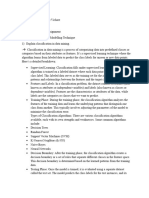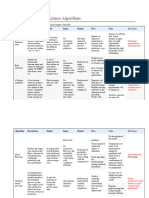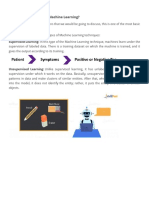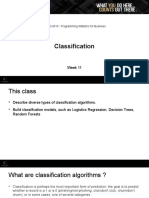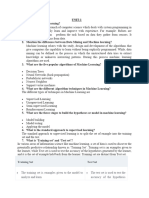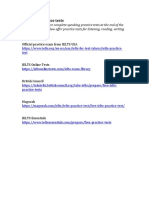0% found this document useful (0 votes)
23 views4 pagesDifferent Types of Models
The document outlines different types of models used in data analysis, categorized by the questions they answer: regression models for numerical outputs, classification models for categorical groupings, and clustering algorithms for segmenting data. It also describes three key model types: linear regression for simple trends, decision trees for branching logic, and neural networks for complex relationships. The choice of model depends on the specific question, data type, computational resources, and relationship complexity.
Uploaded by
cabdullaahi sheekh yaxyeCopyright
© © All Rights Reserved
We take content rights seriously. If you suspect this is your content, claim it here.
Available Formats
Download as DOCX, PDF, TXT or read online on Scribd
0% found this document useful (0 votes)
23 views4 pagesDifferent Types of Models
The document outlines different types of models used in data analysis, categorized by the questions they answer: regression models for numerical outputs, classification models for categorical groupings, and clustering algorithms for segmenting data. It also describes three key model types: linear regression for simple trends, decision trees for branching logic, and neural networks for complex relationships. The choice of model depends on the specific question, data type, computational resources, and relationship complexity.
Uploaded by
cabdullaahi sheekh yaxyeCopyright
© © All Rights Reserved
We take content rights seriously. If you suspect this is your content, claim it here.
Available Formats
Download as DOCX, PDF, TXT or read online on Scribd
/ 4




























